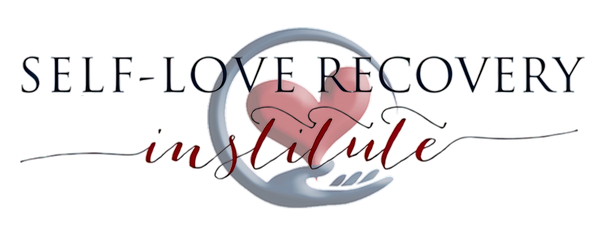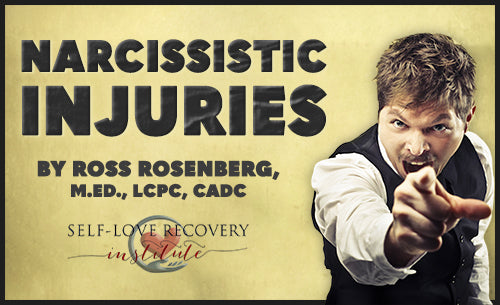
Written by Ross Rosenberg, M.Ed., LCPC, CADC
Self-Love Recovery Institute — President/CEO
Psychotherapist, Educator, Author, Expert Witness
An excerpt from Ross's upcoming third edition of The Human Magnet Syndrome book.
A narcissistic injury occurs when narcissists reflexively react to perceived criticism, embarrassment, judgment, boundaries, or attempts to be held accountable. Often such a reaction takes the shape of aggravated anger or rage, a compulsion to immediately retaliate, or a covert strategy to mute the rage while planning for a more effective time to punish and retaliate. Such reactive fits of punitive rage also occur when a person does not accommodate a narcissist’s insatiable need for admiration, special privileges, praise, etc. In the cases of a person with borderline personality disorder, the “injury” shows up when the perceived wrong-doing or insensitivity is greatly over-amplified while paranoid-like thought processes attribute malicious or purposeful intent.
In all forms of a narcissistic injury, the pathological narcissist perceives the injury to be so severe, that they lose control over their reactive emotions, and consequently punish the “offender." In the current professional vernacular, these events are characterized as “emotional dysregulation.” Unbeknownst to the activated narcissist, the surface rage, attribution of blame, and decision to retaliate are controlled by dissociated or unconsciously buried core shame. Such an unconscious shame response is directly linked to the unexpressed and buried rage toward their one or both of their parents who could not or would not love, respect, care, and protect them—especially as a vulnerable child. In addition, this protective “amnesia” wards off the recollection of the horrendous abuse, neglect, abandonment, and deprivation to which they were unsympathetically subjected.
The defense mechanism, projection, also explains the inner workings of a narcissistic injury. A narcissist “projects” their self-hatred, self-judgment, and unexpressed rage over their unmitigated child abuse, onto a safer person – the offending and supposedly injuring person. Projection conveniently shifts, places, and diverts all of what the narcissist hates about themselves, which is too painful and unsafe to recollect, onto the person they misperceive as hurting them.
Through the projection or placement of such untapped vindictive rage onto another vulnerable person, they delude themselves as finally being strong enough to stand up to their enemies, which are really themselves and the cause of their childhood trauma. The actions of blaming and punishing others “successfully” protects them from what their fragile minds cannot accept. Feeling “bad,” “broken,” and/or “never good enough,” as they did as a child, is simply not an option for the personality-disordered narcissist.
Although the hair-trigger reaction of a narcissistic injury emboldens and seemingly protects the narcissist, it is only temporary. Like a loosely fitted bandage, it will eventually fall off — exposing the underlying wound (core shame). This is when defense mechanisms kick back into action, and once again divert the narcissists away from their core shame, and toward their grandiose and entitled dissociated selves.
Since the human brain was designed through the imperfect process of evolution, and not by computer programmers, neurologists, or mechanical engineers, the brain’s natural defense mechanisms alone are not sufficient in keeping stowed away trauma memories from “bubbling up” into the narcissist’s conscious mind. Despite the brain’s best efforts to keep the trauma cordoned off from consciousness, the “seals are broken,” and there is “leakage.”
The activation or re-surfacing of the trauma manifests as feelings of danger, insecurity, and extreme discomfort, which then trigger a cascade of angry second-level emotional responses, such as hatred, resentment, and/or disgust for the “perpetrating” individual. The resulting emotional dysregulation, at most, is just a temporary solution to the narcissist’s misperceived threat.
Narcissistic injuries are almost always projections, which is the misplacement of the narcissist’s unconscious self-hatred onto any person who they experience as threatening. Projections are dissociated feelings of self-hatred and self-loathing, that are attributed to a person who threatens the narcissist’s veneer-thin self-esteem. Because projections intertwine with narcissistic injuries, it is only academic to separate them.
Narcissistic injuries are quite varied. They range from active aggression, like a disapproving glance or kick in the shin, to passive aggression, which includes the silent treatment or triangulation of others against the “injuring” person. A narcissistic injury may even occur when the recipient of the abuse does absolutely nothing. It is the perception of a threat that causes the internal emotional meltdown, not the real thing!
Whether it is yelling, threatening, or even highly dangerous aggressive actions, narcissistic injuries are unnerving to many and downright frightening to most. They provoke an internal fury that incites punishing pronouncements, judgments, and actions against the perceived perpetrator. The only real cure for them is to find an exit route to the interaction and potentially out of the relationship.
Unfortunately, people who suffer from codependency, or what I now refer to as Self-Love Deficit Disorder™ (SLDD), find themselves powerless against pathological narcissists. The reason for their attraction to narcissists and their inability to extricate themselves from harmful relationships with them is explained in full in my book, The Human Magnet Syndrome: The Codependent Narcissist Trap. Sadly, those with SLDD mistake the abuse for love and explain away their harm (trauma) by using some of the same defense mechanisms mentioned above.
Remember this: few narcissists learn from the consequences of their out-of-control narcissistic injuries. Any act of contrition or remorse is just a guise to hide their fear of being abandoned by the very person to whom they are causing so much suffering. It is a psychological fact: few narcissists learn from the outcomes of their abuse. And when confronted about it, they do not experience empathy, as they feel justified in their actions.


0 comments